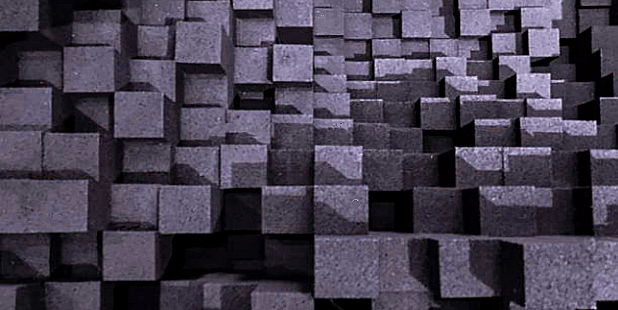Accredited InvestorsAltcoinAnatoli UnitskyAnti-Money Laundering (AML) In CryptoAPIArbitrageArtCoin TokenArticle DirectoryASICAuction Terminology GlossaryBasics of Stock Market InvestingBear MarketBest Crypto Payment Provider In the WorldBitcoinBlockchainBlockchain ConfirmationBlockchain Consensus MechanismBlockchain ForkBlockchain GlossaryBored Ape Yacht ClubBuild a Business That OutperformsBull MarketBuying SkyWay SharesByzantine Fault Tolerance (BFT) ExplainedCasascius CoinCentral Bank Digital Currency (CBDC)Centralized Crypto ExchangeCoinCoinsetCold WalletCollateralCommodity Futures Trading Commission (CFTC)Cross-Chain TechnologyCRUCrypto ExchangeCrypto GlossaryCrypto JokesCrypto Terms to KnowCrypto TickerCryptocurrencyCryptographyCryptojackingCryptounit BlockchainCryptounit GlossaryCryptounit ProgramdApp (Decentralized Application)Dead CoinDecentralized Exchange (DEX)Decentralized Finance (DeFi)Difference Between Bitcoin and EthereumDifferent Ways of Investing MoneyDigital CurrencyDistributed LedgerDo Your Own Research (DYOR)Dollar Cost Averaging (DCA)Dow Jones Industrial Average (DJIA)EncryptionERC-20ERC-721EthereumEvoScentFear Of Missing Out (FOMO)Fear, Uncertainty and Doubt (FUD)Fiat MoneyFNT Fintech CompanyGenesis BlockGlobal Unit PayGlossary of Banking TermsGlossary of Business TermsGlossary of Financial TermsHalvingHODLHot WalletHow Do I Start InvestingHow Rich is Satoshi Nakamoto?How to Create a BlockchainHow to Find Private InvestorsHow to Get Into FintechHow to Program Smart ContractsI Am Thrilled to Be a Part of This Global ProjectInitial Coin Offering (ICO)Initial Public Offering (IPO)Initial Token Offering (ITO)Innovation Basalt TechnologyInnovative Transportation TechnologiesInternational Bank Account Number (IBAN)Investing in Gold Mining StocksInvesting in Gold MiningJagerJoy of Missing Out (JOMO)Know Your Customer (KYC)LedgerLiquidity in CryptocurrencyMaker and Taker Fees in Crypto TradingMarket Capitalization (Market Cap)Meme CoinMetal Credit CardMetaMaskMillenials Now Have Access to Generational WealthMy Best Investment EverNew Digital EvolutionNFT GlossaryOff-Chain TransactionsOn-Chain TransactionsOpen Edition NFTPeer-to-Peer (P2P)Personal Loan GlossaryProbably the Best STO on the MarketProof of Stake (PoS)Real Estate Glossary of TermsReal Estate Investing GlossaryRebase TokenSecurities and Exchange Commission (SEC)Security Token ExchangesSecurity Token Offering (STO)Soulbound Decentralized Identities for Security TokensSoulbound ID Launch by Stobox Proves a SuccessSoulbound TokensStoboxStock Market GlossaryTestimonialsTether Platform and Token (USDT)UnitEx ExchangeUnitsky String TechnologiesUNTBUSDUValidatorWe Started Investing When We Were 25What are Blue Chip NFT?What are Blue Chip Stocks?What are Crypto Assets?What are Crypto Smart Contracts?What are CryptoPunks NFT?What are Digital Assets?What are Digital Collectibles?What are Gas Fees?What are Gas Wars?What are Hashmasks?What are Non Fungible Tokens?What are Non-Sufficient Funds (NSF)?What are Soulbound Tokens (SBT)?What are Stablecoins in Crypto?What are Transactions Per Second (TPS)?What are Utility NFTs?What are Utility Tokens?What Does Burning Crypto Mean?What Does Diamond Hands Mean?What Does Paper Hands Mean?What Does To The Moon Mean?What Does WAGMI Mean?What Happened to Satoshi Nakamoto?What is a 51% Attack?What is a Baby Boomer?What is a Backlink?What is a Banner?What is a Barcode?What is a Bid-Ask Spread in Crypto?What is a Block in Blockchain?What is a Block Reward?What is a Blockchain Address?What is a Blockchain Node?What is a Blockchain Oracle?What is a Blog?What is a Bond?What is a Bot?What is a Broker?What is a Business Accelerator?What is a Cash Cow?What is a Commercial Bank?What is a Commodity?What is a Con?What is a Credit?What is a Credit Limit?What is a Credit Rating?What is a Crypto Airdrop?What is a Crypto Bridge?What is a Crypto Scam?What is a Crypto Token?What is a Crypto Wallet?What is a Crypto Whale?What is a Crypto Winter?What is a Cryptocurrency Public Ledger?What is a Cryptocurrency Roadmap?What is a DAO?What is a Dark Pool?What is a Day Trader?What is a Dead Cat Bounce?What is a Default?What is a Derivative?What is a Digital Credit Card?What is a Fiscal Quarter?What is a Fungible Token?What is a Governance Token?What is a Grace Period?What is a Hard Fork?What is a Hot Wallet?What is a Hybrid Blockchain?What is a Hybrid PoW/PoS?What is a Joint Account?What is a Market Cap?What is a Merkle Tree in Blockchain?What is a Mining Farm?What is a Nonce? What is a PFP NFT?What is a POS System?What is a Prepaid Card?What is a Private Blockchain?What is a Private Key?What is a Public Blockchain?What is a Public Key?What is a Reserve Currency?What is a Ring Signature?What is a Routing Number?What is a Rug Pull in Crypto?What is a Safe Deposit Box?What is a Satoshi?What is a Security Token?What is a Seed Phrase?What is a Shitcoin?What is a Sidechain?What is a Soft Fork?What is a Spot Market?What is a State Bank?What is a SWIFT Code?What is a Tax Identification Number (TIN)?What is a Time Deposit?What is a Transaction Account?What is a Variable Interest Rate?What is a Virtual Assistant (VA)?What is a Virtual Card?What is a Virtual Currency?What is a Visa Card?What is a Whitelist in Crypto?What is a Whitepaper?What is Accounts Payable (AP)?What is AMA in Crypto?What is Amortization?What is an Accrual?What is an ACH Transfer?What is an Actuary?What is an Addendum?What is an Algorithm?What is an Angel Investor?What is an Annuity?What is an Asset?What is an ATM?What is an Atomic Swap?What is an Audit?What is an Avatar?What is an EIN?What is an Embargo?What is an Entrepreneur?What is an IDO (Initial Dex Offering)?What is an Interest Rate?What is an Internet cookie?What is an Investment Bank?What is an NFT Drop?What is an NFT Floor Price?What is an Ommer Block?What is an Orphan Block?What is an Outstanding Check?What is an Overdraft?What is Artificial Intelligence (AI)?What is B2B (Business-to-Business)?What is B2G (Business-to-Government)?What is Bartering?What is Bitcoin Dominance?What is Bitcoin Pizza Day?What is Blockchain Immutability?What is Blockchain Used For?What is BRICS?What is Business-to-Consumer (B2C)?What is C2C (Customer to Customer)?What is Capitalism?What is Catfishing?What is CFD Trading?What is Check Kiting?What is Cloud Mining?What is Communism?What is Content Marketing?What is Decentralization in Blockchain?What is DeFi in Crypto?What is Delisting?What is Depreciation?What is Digital Marketing?What is Diversification?What is Double Spending?What is Dumb Money?What is Dumping?What is Earnings Per Share (EPS)?What is Economics?What is Email Marketing?What is Equity?What is Etherscan?What is Fintech?What is Foreign currency?What is Forex?What is Fundamental Analysis (FA)?What is GameFi?What is Generative Art NFT?What is Gwei?What is Hard Currency?What is Hash Rate?What is Hashing in Blockchain?What is Inflation?What is Initial Game Offering (IGO)?What is Interest?What is Interest Income?What is Mainnet?What is Mastercard?What is Metaverse in Crypto?What is Mining in Cryptocurrency?What is Minting NFT?What is Mobile Banking?What is Money Laundering?What is NFT Alpha?What is NFT Metadata?What is NFT Rarity?What is NGMI Meaning?What is Nominal Interest Rate?What is Online Banking?What is Open-End Credit?What is OpenSea NFT Marketplace?What is Personal Identification Number (PIN)?What is Play-to-Earn?What is Polygon?What is Proof of Authority (PoA)?What is Proof of Work (PoW)?What is Public Key Cryptography?What is Pump and Dump?What is Quantum Computing?What is Refinancing?What is Retail Banking?What is Ripple?What is Sharding?What is Slippage in Crypto?What is Smart Money?What is Solvency?What is Soulbound ID?What is SSL?What is Staking in Cryptocurrency?What is Technical Analysis (TA)?What is Testnet?What is the Ask Price?What is the Better Business Bureau (BBB)?What is the Bid Price?What is the Dark Web?What is the InterPlanetary File System (IPFS)?What is the Gold Standard?What is the Lightning Network?What is the Prime Rate?What is the Sandbox?What is the Secondary Market?What is the World Bank?What is Tier 1 Capital?What is Tokenomics?What is TRC-20?What is Universal Banking?What is Unspent Transaction Output (UTXO)?What is Usury?What is Volatility in Crypto?What is Wash Trading?What is Web3?What is Whisper?What is XRP?What is Zero-Knowledge Proof (ZKP)?Who is Beeple?Who is Satoshi Nakamoto?Who is Vitalik Buterin?Why Tokenization is a Safe HavenWhy You Should Try Your Hand at Trading
What is a Block in Blockchain?
- Home
- Blockchain Glossary
- What is a Block in Blockchain?
Blockchain technology is the backbone of cryptocurrency, providing a secure and transparent way of tracking and recording digital transactions. The name "Blockchain" comes from the fact that it consists of blocks of data linked together in a chain.

What is a Block in Blockchain?
Blockchain blocks are the data structures where transactions are permanently recorded. Each block holds some or all of the recent transactions that have not yet been verified by the network. After verification, the block is closed and a new one is created to store new transactions.
The information stored in a block is permanent and cannot be changed or deleted. This ensures the integrity and immutability of the Blockchain, providing a secure and transparent record-keeping system for financial transactions.
The Anatomy of a Blockchain Block
In a Blockchain network, a large volume of transactions occur and keeping track of them is crucial for the system to function properly. The transactions made during a given period are recorded into a file called a block, which forms the foundation of the Blockchain network.
A block stores important information about the transactions and does not take up a significant amount of storage space. The elements that a block typically includes are:
- Magic number: Identifies the block as part of a specific cryptocurrency network.
- Blocksize: Limits the amount of information that can be written in the block.
- Block header: Contains information about the block.
- Transaction counter: Represents the number of transactions stored in the block.
- Transactions: A list of all the transactions in the block.
The transaction element is the largest, followed by the block header, which comprises sub-elements such as the version of the cryptocurrency being used, the hash of the previous block's header, the hash of transactions in the Merkle tree (data structure used for data verification and synchronization) of the current block, a timestamp, the difficulty rating of the target hash, and the encrypted number known as the nonce.
The nonce is the key to closing the block and is solved by a miner through a process of guessing. The miner's program uses random numbers to try and guess the nonce in the hash. When a nonce is verified, the hash is solved and the network closes the block, creating a new one with a header. This process repeats continuously.
Types of Blockchain Blocks
Contrary to popular belief, not all blockchains contain numerous types of blocks. Unlike conventional data structures, the number of blocks in a blockchain can expand continuously as new blocks are added to the chain. So, let's delve into the three types of blocks found in blockchain systems.
Genesis Block
The genesis block is the starting block of a blockchain, serving as the foundation for all subsequent blocks. It was created by Satoshi Nakamoto in Bitcoin's creation and links to the previous block, maintaining the blockchain's immutability through the use of technologies like the Merkle tree.
Despite its verification depending on the scenario, the genesis block remains the backbone of the blockchain, allowing network nodes to synchronize by having matching genesis blocks and enhancing security in the distributed transaction ledger.
Valid Blocks
Valid blocks are crucial to blockchain networks. They are the blocks that have been authorized by the network and have solved a cryptographic challenge, ensuring their validity. After network consensus is reached, the blocks are added to the blockchain and distributed to all nodes, who serve as verification points.
Valid blocks hold verified transactions and have a structured data format that includes information such as the coinbase, transaction data, timestamp, Merkle Root, and block hash, ensuring public verification and secure transactions within the blockchain.
Orphan Blocks
Orphan blocks are blocks in a blockchain that don't belong to the main chain. This happens when two miners create blocks at the same time. While they are not crucial to the blockchain, they can be dangerous if a hacker creates them to reverse a transaction.
The network consensus chooses which blocks to add to the chain and which to orphan. The longest chain with the most transactions is usually selected, making security simple. But if a hacker has over 50% of the mining power, they may try to reverse it. However, this power is not needed to create an orphan block, and the network consensus keeps the blocks secure from hacking.
The Bottom Line
A block in Blockchain technology is a collection of verified transactions stored in a secure, tamper-proof manner. By connecting blocks together in a chain, the Blockchain provides a permanent and immutable record of all previous transactions. The tamper-proof nature of the Blockchain makes it an ideal solution for financial transactions, voting systems, and other applications that require secure and transparent record-keeping.
Related Articles

What is a Merkle Tree in Blockchain?
The Leaf Nodes in a Merkle tree are the hashes of each cryptocurrency transaction in a block. They are also known as...

How to Create a Blockchain
Once you have identified an appropriate use-case, the next step is to select your consensus mechanism. There are many different types of...

What is a Public Blockchain?
Blockchain technology comes in various forms, each suited for specific use cases. These include public, private, and federated blockchains, all of which...

What is Blockchain Used For
So far, we’ve talked about blockchain as a whole, but the individual blocks that make up the chain are quite important.
- Home
- Blockchain Glossary
- What is a Block in Blockchain?